10g
Showing 51–100 of 446 results
-

Albumin, Bovine, Fraction V, Lyophilized Powder
$171.89 Add to cart View Product DetailsAlbumin, Bovine, Fraction V, Lyophilized Powder
-

Alizarin Red S
$103.95 Add to cart View Product DetailsAlizarin Red S
-

alpha-Angelicalactone
$464.14 Add to cart View Product Detailsalpha-Angelicalactone
-

alpha-Cyclodextrin
$84.50 Add to cart View Product Detailsalpha-Cyclodextrin
-
![alpha-Thioglycerol, [Matrix for FABMS and liquid SIMS]](https://advatechgroup.com/wp-content/plugins/woocommerce/assets/images/xplaceholder.webp.pagespeed.ic.ANHCL-f_RA.webp)
alpha-Thioglycerol, [Matrix for FABMS and liquid SIMS]
$119.85 Add to cart View Product Detailsalpha-Thioglycerol, [Matrix for FABMS and liquid SIMS]
-
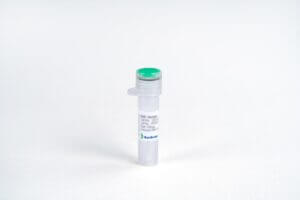
Amphiregulin, Human
$43.13 Add to cart View Product DetailsAmphiregulin is a member of the EGF family of cytokines, which comprises at least ten proteins including EGF, TGF-α, HB-EGF, Epiregulin, Tomoregulin, Neuregulins and the various heregulins. Through the EGF/TGF-α receptor, it stimulates growth of keratinocytes, epithelial cells and some fibroblasts. Amphiregulin also inhibits the growth of certain carcinoma cell lines. Synthesized as a transmembrane protein, Amphiregulin’s extracellular domain is proteolytically processed to release the mature protein.
-

Aniline Blue, Water Soluble
$80.04 Add to cart View Product DetailsAniline Blue, Water Soluble
-
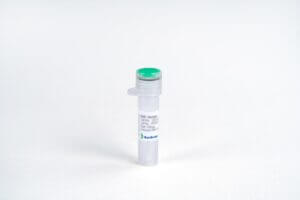
Annexin V, His, Human
$63.83 Add to cart View Product DetailsANXA5, also known as annexin V, is a member of the annexin family of calcium-dependent phospholipid binding proteins which are involved in membrane-related activity along exocytotic and endocytotic pathways. ANXA5 is a phospholipase A2 and protein kinase C inhibitory protein with calcium channel properties. It functions in signal transduction, inflammation, cell growth and differentiation. ANXA5 is an anticoagulant protein that acts as an indirect inhibitor of the thromboplastin-specific complex, which is involved in the blood coagulation cascade. There are at least ten different annexins in the mammalian species. Annexins do not contain signal peptides, yet some annexins (A1, A2 and A5) appear to be secreted in a physiologically regulated fashion.The binding of labeled ANXA5 to phosphatidylserine is commonly used as a marker of apoptosis.
-

April, Mouse
$68.14 Add to cart View Product DetailsA Proliferation-inducing Ligand (April)) also known as TNSF13A, Tall-2, and TRDL-1, is a member of the TNF ligand (TNFL) superfamily. April is most similar to B-cell activation factor (BAFF) with which it shares 30% sequence identity, compete for two receptors, TACI and BCMA. APRIL is expressed at low levels in lymphoid tissue and is over-expressed by a number of tumors. April has a proliferative effect on both normal and tumor cell lines in vitro and in vivo. APRIL seems to be involved in the regulation of death and proliferation of tumor cells, but there are still contradictory findings regarding its overall biological effects.
-

Arachidic Acid
$364.65 Add to cart View Product DetailsArachidic Acid
-

Auramine O
$91.64 Add to cart View Product DetailsAuramine O
-

Azure A
$100.14 Add to cart View Product DetailsAzure A
-

Azure II
$103.47 Add to cart View Product DetailsAzure II
-

BAFF, Human
$51.75 Add to cart View Product DetailsB-cell activating factor, also known as BAFF, TALL-1, TNAK, and zTNF4, is a member of theTNF ligand superfamily designated TNFSF13B. Produced by macrophages, dendritic cells, and T lymphocytes, BAFF promotes the survival of B cells and is essential for B cell maturation. BAFF binds to three TNF receptor superfamily members: B-cell maturation antigen (BCMA/TNFRSF17), transmembrane activator and calcium-modulator and cyclophilin ligand interactor (TACI/TNFRSF13B) and BAFF receptor (BAFF R/BR3/TNFRSF 13C). These receptors are type III transmembrane proteins lacking a signal peptide. Whereas TACI and BCMA bind BAFF and another TNF superfamily ligand, APRIL(a proliferation-inducing ligand), BAFF R selectively binds BAFF. The BAFF R extracellular domain lacks the TNF receptor canonical cysteine-rich domain (CRD) and contains only a partial CRD with four cysteine residues. Human and mouse BAFF R share 56% aa sequence identity. BAFF R is highly expressed in spleen, lymph node and resting B cells. It is also expressed at lower levels in activated B cell, resting CD4+ T cells, thymus and peripheral blood leukocytes.
-

Basic Fuchsin, Special
$151.90 Add to cart View Product DetailsBasic Fuchsin, Special
-

Behenyl Alcohol
$68.97 Add to cart View Product DetailsBehenyl Alcohol
-

Benzene-d6, 99.5 Atom Percent D
$261.23 Add to cart View Product DetailsBenzene-d6, 99.5 Atom Percent D
-

Betacellulin, Human
$63.83 Add to cart View Product DetailsBetacellulin (BTC) is a member of the EGF family of growth factors that also includes EGF, TGF-α, Amphiregulin, HB-EGF, Epiregulin, Tomoregulin, Heregulin and Neuregulins. Mature human BTC protein exhibits 80% amino acidsimilarity with mouse BTC protein. BTC is expressed in most tissues including kidney, uterus, liver and pancreas. It is also present in body fluids, including serum, milk, and colostrum. It is synthesized primarily as a transmembrane precursor, which is then processed to a mature molecule by proteolytic events. BTC signals through the EGF receptor.
-

Betacellulin, Human
$63.83 Add to cart View Product DetailsBetacellulin (BTC) is a member of the EGF family of growth factors that also includes EGF, TGF-α, Amphiregulin, HB-EGF, Epiregulin, Tomoregulin, Heregulin and Neuregulins. Mature human BTC protein exhibits 80% amino acidsimilarity with mouse BTC protein. BTC is expressed in most tissues including kidney, uterus, liver and pancreas. It is also present in body fluids, including serum, milk, and colostrum. It is synthesized primarily as a transmembrane precursor, which is then processed to a mature molecule by proteolytic events. BTC signals through the EGF receptor.
-

Betacellulin, Mouse(HEK 293-expressed)
$51.75 Add to cart View Product DetailsBetacellulin (BTC) is a member of the EGF family of growth factors that also includes EGF, TGF-α, Amphiregulin, HB-EGF, Epiregulin, Tomoregulin, Heregulin and Neuregulins. Mature human BTC protein exhibits 80% amino acidsimilarity with mouse BTC protein. BTC is expressed in most tissues including kidney, uterus, liver and pancreas. It is also present in body fluids, including serum, milk, and colostrum. It is synthesized primarily as a transmembrane precursor, which is then processed to a mature molecule by proteolytic events. BTC signals through the EGF receptor.
-

Bis(triphenylphosphine)nickel(II) Dichloride
$54.23 Add to cart View Product DetailsBis(triphenylphosphine)nickel(II) Dichloride
-

BMP-2, Human
$86.25 Add to cart View Product DetailsHuman Bone Morphogenetic Protein-2 (BMP-2) is a bone-growth regulatory factor and belongs to the transforming growth factor-beta (TGF-beta) superfamily. Human Bone Morphogenetic Protein-2 (BMP-2) is synthesized as large precursor molecule (Met1-Arg396, with a signal peptide from Met1 to Gly23), propeptide (Leu24-Arg282) of which is cleaved by PCSK5 (Proprotein Convertase Subtilisin/Kexin type 5). The active form consists of a dimer of two identical proteins which are linked by a disulfide bond at Cys360. It plays an important role in the development of bone and cartilage, cardiac cell differentiation and epithelial to mesenchymal transition. It is also involved in the hedgehog pathway, TGF-beta signaling pathway, and in cytokine-cytokine receptor interaction.
-

BMP-4, Human
$155.25 Add to cart View Product DetailsHuman BMP-4 is one of at least 15 structurally and functionally related BMPs, which are members of the transforming growth factor β (TGF-β) superfamily. BMPs were originally identified as protein regulators of cartilage and bone formation. However, they havesince been shown to be involved in embryogenesis and morphogenesis of various tissues and organs. BMPs have also been shown to regulate the growth, differentiation, chemotaxis and apoptosis of various cell types, including mesenchymal cells, epithelial cells, hematopoietic cells and neuronal cells. BMP-4 is synthesized as large precursor molecules which are cleaved by proteolytic enzymes. The active form can consist of a dimer of two identical proteins or a heterodimer of two related bone morphogenetic proteins.
-

BMP-7, Human
$155.25 Add to cart View Product DetailsHuman BMP-7 is one of at least 15 structurally and functionally related BMPs, which are members of the transforming growth factor β (TGF-β) superfamily. BMPs were originally identified as protein regulators of cartilage and bone formation. However, they havesince been shown to be involved in embryogenesis and morphogenesis of various tissues and organs. BMPs have also been shown to regulate the growth, differentiation, chemotaxis and apoptosis of various cell types, including mesenchymal cells, epithelial cells, hematopoietic cells and neuronal cells. BMP-7 is synthesized as large precursor molecules which are cleaved by proteolytic enzymes. The active form can consist of a dimer of two identical proteins or a heterodimer of two related bone morphogenetic proteins.
-

Brilliant Cresyl Blue
$146.58 Add to cart View Product DetailsBrilliant Cresyl Blue
-

Brucine Sulfate, Heptahydrate, Reagent, ACS
$130.84 Add to cart View Product DetailsBrucine Sulfate, Heptahydrate, Reagent, ACS
-

Brucine, Anhydrous
$130.05 Add to cart View Product DetailsBrucine, Anhydrous
-
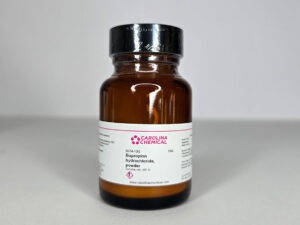
Bupropion Hydrochloride Powder – 10G
$27.60 Add to cart View Product DetailsCAS Number 31677-93-7 Molecular Weight 276.20 Molecular Formula C13H18ClNO · HCl -

Carbamazepin
$56.76 Add to cart View Product DetailsCarbamazepin
-

Carbol Fuchsin
$475.50 Add to cart View Product DetailsCarbol Fuchsin
-
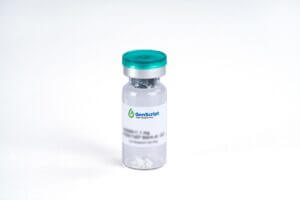
Cardiac Troponin I (cTnI), His, Human
$43.13 Add to cart View Product DetailsCardiac Troponin I (cTnI) is a subtype of the troponin family that is commonly used as a marker for myocardial damage. Cardiac troponin I is specific for cardiac tissue and is detected in the serum only if myocardial injury has occurred. Because cardiac troponin I is a very sensitive and specific indicator of heart muscle (myocardium) damage, serum levels can be used to help differentiate between unstable angina and myocardial infarction (heart attack) in people with chest pain or acute coronary syndrome.
-

Carmine
$127.27 Add to cart View Product DetailsCarmine
-

Catalase, Lyophilized
$1,355.07 Add to cart View Product DetailsCatalase, Lyophilized
-

Cathepsin B, His, Human
$142.31 Add to cart View Product DetailsCathepsin B is an enzymatic protein that is a member of the peptidase (or protease) family. Elevated lev- els of cathepsin B occur in a wide variety of disease,causing numerous pathologies including cell death, inflammation, and the production of toxic peptides. For example, neuroscience research suggests that cathepsin B plays a role in inducing epilepsy resulting in a significant amount of cell death. Seizure-induced rats treated with a cathepsin B inhibitor exhibited improved neurological scores and learning ability with reduced neuronal cell death.
-

Cathepsin L, Human
$81.94 Add to cart View Product DetailsCathepsin L is an enzyme. Cathepsin L, a lysosomal endopeptidase expressed in most eukaryotic cells, is a member of the papain-like family of cysteine proteinases. Cathepsin L plays a major role in antigen processing, tumor invasion and metastasis, bone resorption, and turnover of intracellular and secreted proteins involved in growth regulation. Unlike the precursor forms of other papain family members, the 43 kDa pro-cathepsin L itself is secreted from various cells. Pro-cathepsin L is the major excreted protein of malignantly transformed mouse fibroblasts and is also one of the major acidic cysteine proteases in mammalian cells.
-
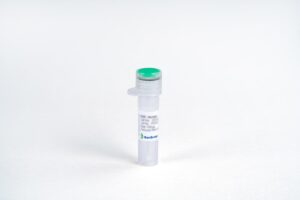
CD160 Fc Chimera, Human
$34.50 Add to cart View Product DetailsCD160 is a glycosylphosphatidylinositol-anchored Ig domain protein that is expressed on almost all intestinal intraepithelial lymphocytes (IELs), γδ T (gamma delta T) cells, NK (natural killer) cells, and a minor subset of CD4+ and CD8+ T cells. In terms of function, work has centered on the role of CD160 in enhancing NK or CD8 T cell activation. Such effects have been attributed to the ability of CD160 to bind classical and nonclassical MHC class I molecules, although with apparent low affinity, requiring clustering of MHC class I molecules or overexpression of CD160 or MHC class I for detection of the interaction.
-

CD25/IL-2Rα Fc Chimera, Human
$103.50 Add to cart View Product DetailsThe IL-2 receptor system consists of three non-covalently linked subunits termed IL-2Rα, IL-2Rβ, and IL-2Rγ. The IL-2Rα is a type I transmembrane protein consisting of a 219 amino acid (a.a.) extracellular domain, a 19 a.a. transmembrane domain and a 13 a.a. intracellular domain, which is not involved in the transduction of IL-2 signal. Activated T cells, regulatory T cells (Tregs) and NK cells express high levels of CD25 and expression of the high-affinity IL-2Rα is mostly limited to these cell populations. Signaling via IL-2Rα mediates multiple biological processes in various cell populations, e.g. proliferation and differentiation of B cells and NK cells. A soluble form of IL-2Rα (IL-2Rα) appears in serum, concomitant with its increased expression on cells. The function of the soluble IL-2Rα is unclear. Increased levels of IL-2Rα in biological fluids reportedly correlate with increased T and B cell activation and immune system activation. Increased serum concentration of IL-2Rα has been observed in patients with a variety of inflammatory conditions and in the course of some leukemias and lymphomas.
-

CD40L/CD154/TRAP, Human
$64.69 Add to cart View Product DetailsCD40 Ligand (CD40L/CD154/TRAP) is a membrane glycoprotein and differentiation antigen expressed on the surface of T-cells. The CD40 ligand stimulates B-cell proliferation and secretion of all immunoglobulin isotypes in the presence of cytokines. It also costimulates proliferation of activated T-cell and this is accompanied by the production of IFN-γ, TNF-α, and IL2. CD40 ligand has been shown to induce cytokine production and tumoricidal activity in peripheral blood monocytes.
-

CHAPSO
$539.13 Add to cart View Product DetailsCHAPSO
-

Chloroform-d, 99.6atom PercentD (stabilized with Silver chip)
$32.81 Add to cart View Product DetailsChloroform-d, 99.6atom PercentD (stabilized with Silver chip)
-

Cholesteryl Palmitate
$629.95 Add to cart View Product DetailsCholesteryl Palmitate
-

CLDN18.2, His, Human
$189.75 Add to cart View Product DetailsClaudin-18 is a protein that in humans is encoded by the CLDN18 gene. CLDN18 belongs to the large claudin family of proteins, which form tight junction strands in epithelial cells. The Expression of Isoform A2 (CLDN18.2) is restricted to the stomach mucosa where it is predominantly observed in the epithelial cells of the pit region and the base of the gastric glands including exocrine and endocrine cells (at protein level). CLDN18.2 is founded to be abundant in gastric tumors, Experimental antibody IMAB362 targets Claudin 18.2 to help treat gastric cancers.
-

CNTF, Human
$63.83 Add to cart View Product DetailsCiliary Neurotrophic Factor (CNTF) is a cytokine belonging to the Interleukin 6 (IL-6) family, which also includes IL-6, Oncostatin M, Leukemia Inhibitory Factor (LIF), and Cardiotrophin-1. Structurally, CNTF resembles a four-helix bundle composition, similar to the other members of the IL-6 family. The receptor for CNTF is composed of three parts: a gp130-like subunit common in the IL-6 receptor family, a LIF Receptor β subunit, and a CNTF specific α receptor subunit. Upon binding to the CNTF, the β subunit of the CNTF receptor will undergo tyrosine phosphorylation, and activate the intracellular JAK/STAT pathway. The main function of CNTF in vivo is to promote the differentiation and survival of a variety of neurons and glial cells, including sympathetic precursor cells and spinal motor neurons.
-

CNTF, Mouse
$90.56 Add to cart View Product DetailsCiliary neurotrophic factor (CNTF) is a polypeptide hormone whose actions appear to be restricted to the nervous system where it promotes neurotransmitter synthesis and neurite outgrowth in certain neuronal populations. CNTF was initially identified as a trophic factor for embryonic chick ciliary parasympathetic neurons in culture. Furthermore, the protein is also a potent survival factor for neurons and oligodendrocytes and may be relevant in reducing tissue destruction during inflammatory attacks. In addition, CNTF is useful for treatment of motor neuron disease and it could reduce food intake without causing hunger or stress. Recombinant murine CNTF containing 198 amino acids and it shares 82 % and 95 % a.a. sequence identity with human and rat CNTF.
-

CNTF, Rat
$63.83 Add to cart View Product DetailsCiliary Neurotrophic Factor (CNTF) is a polypeptide hormone which acts within the nervous system where it promotes neurotransmitter synthesis and neurite outgrowth in certain neuronal populations. CNTF is a potent survival factor for neurons and oligodendrocytes and may play a role in reducing tissue damage during increased inflammation. A mutation in this gene, which results in aberrant splicing, leads to ciliary neurotrophic factor deficiency, however this phenotype is not causally related to neurologic disease.
-

Congo Red
$92.67 Add to cart View Product DetailsCongo Red
-

Creatinine
$81.62 Add to cart View Product DetailsCreatinine
-

Cresol Red, Water Soluble
$76.92 Add to cart View Product DetailsCresol Red, Water Soluble
-

Croton Oil
$132.25 Add to cart View Product DetailsCroton Oil
-

Curcumin
$105.42 Add to cart View Product DetailsCurcumin






